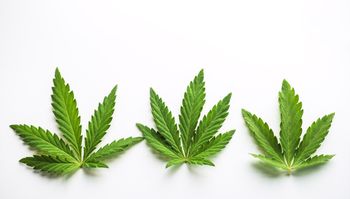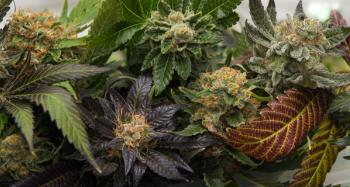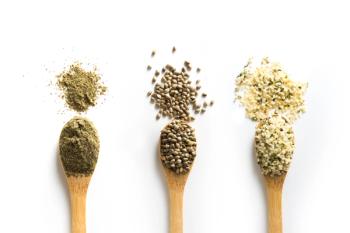
Chromatographic Analysis of Endocannabinoids and Phytocannabinoids in Biological Samples: A Review
A recently published review article, originally covered by our sister brand LCGC International, outlined advances in chromatographic analysis of endocannabinoids and phytocannabinoids in biological samples.
In a recent review article, scientists from the Federal University of Santa Catarina in Florianópolis, Brazil looked at advancements made in the chromatographic analysis of endocannabinoids and phytocannabinoids in biological samples. Their findings were published in the Journal of Chromatography A (1).
The endocannabinoid system (ECS) is made of a network of chemical signals and cellular receptors densely packed throughout our brains and bodies (2). Cannabinoid receptors in the brain, also known as CB1 receptors, outnumber many other receptor types on the brain. They help control the levels and activity of most other neurotransmitters, with this being part of its regulation cycle: gaining immediate feedback, then turning up or down the activity of whichever system needs to be adjusted, whether that is hunger, temperature, or alertness. To stimulate these receptors, the body produces endocannabinoids (eCBs), molecules that hold structural similarity to molecules in the cannabis plant. The main eCBs that are characterized are anandamide (AEA) and 2-arachidonoylglycerol (2-AG) which are synthesized on demand from arachidonic acid (AA) precursors; however, various eCBs have been identified, including 2-arachidonylglycerol ether (noladin ether, 2-AGE), N-arachidonyldopamine (NADA) and O-arachidonoylethanolamine (virodhamine; VA).
The ECS has gained attention over the last few years, mostly due to its involvement with the pathophysiology of diseases and the potential use of Cannabis sativa (marijuana). Chromatographic techniques have been created for analyzing cannabinoids in various biological matrices, including blood, plasma, urine, hair, and postmortem samples like bile and lung tissue. Various methods have been used for cannabinoid quantification in biological samples, including gas chromatography (GC) and high-performance liquid chromatography (HPLC) coupled with mass spectrometry (MS) or tandem mass spectrometry (MS/MS) due to its exceptional sensitivity, selectivity and compatibility with the physicochemical properties of eCBs, phytocannabinoids, and metabolites. However, gas chromatography (GC) and high-performance liquid chromatography (HPLC) coupled with mass spectrometry (MS) or tandem mass spectrometry (MS/MS) due to its exceptional sensitivity, selectivity and compatibility with the physicochemical properties of eCBs, phytocannabinoids, and metabolites.
In this review article, the scientists pulled studies from 2018–2023 from in 8 databases, with 38 articles being selected after screening and exclusion processes. From there, the articles had their data tabulated, summarized, and analyzed. The eCBs and phytocannabinoids had their main characteristics analyzed, with the potential use of each biological sample being described; these findings show gaps in our literature that still warrant exploring. Altogether, well-established and innovative sample preparation protocols and chromatographic separations, such as gas chromatography (GC), high-performance liquid chromatography (HPLC), and ultrahigh performance liquid chromatography (UHPLC) were reviewed, noting their advantages, drawbacks, and challenges.
Overall, the scientists expect continued availability of increasingly sensitive analytical methodologies. Laboratories consistently face issues with detecting and quantifying, especially with eCBs and phytocannabinoids. Moreover, critical considerations include selecting the most correct biological samples and finding more information about cannabinoid concentration in alternative samples. As such, miniaturized, environmentally friendly, and automated sample preparation techniques should be further explored in laboratory routines. For eCB analysis, advances for in vivo fiber-solid phase microextraction (SPME) techniques are vital. With these findings, researchers must prioritize optimizing variables across all stages and consider expanding utilization of multifactor planning or chemometric tools. Further, prior to employing methods for preparing forensic reports, analytical validation must be conducted based on guidelines.
References
(1) Inamassu, C. H.; e Silva, L. R.; Marchioni, C. Recent Advances in the Chromatographic Analysis of Endocannabinoids and Phytocannabinoids in Biological Samples. J. Chromatogr. A 2024, 1732, 465225. DOI:
(2) Grinspoon, P. The Endocannabinoid System: Essential and Mysterious. Harvard Health Publishing 2021.
Newsletter
Unlock the latest breakthroughs in cannabis science—subscribe now to get expert insights, research, and industry updates delivered to your inbox.





